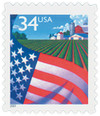
# 3495 - 2001 34c Flag Over Farm, self-adhesive booklet stamp (Ashtoin Potter)
Flag Over Farm
City: Washington, DC
Printed by: Avery Dennison
Printing Method: Lithographed
Color: Multicolored
The Soil Conservation Service
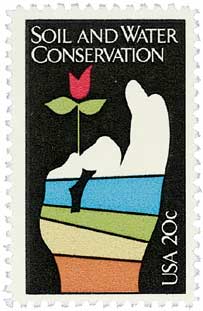
On April 27, 1935, President Franklin Roosevelt signed the Soil Conservation Act. The act established the Soil Conservation Service (SCS) to reduce and repair the damage caused by soil erosion. The SCS’s work was expanded and continues today as the Natural Resources Conservation Service.
Hugh Hammond Bennett was one of the driving forces behind the act and the soil conservation movement – in fact he’s considered the “father of soil conservation.” Years earlier, Bennett was working as a surveyor for the US Department of Agriculture (USDA) Bureau of Soils. He saw first-hand how soil was eroded by wind and water, how this made it harder to grow crops, and in turn, how it damaged communities that depended on these crops. Bennett then set out to inform the nation, writing and speaking on the soil erosion crisis. In 1928, he published Soil Erosion: A National Menace, which encouraged Congress to establish their first federal soil erosion experiment stations in 1929.

After Franklin Roosevelt was elected president in 1932, his administration made conserving soil and water resources a high priority. The 1933 National Industrial Recovery Act established the Soil Erosion Service (SES) within the Department of the Interior. The SES visited areas with significant erosion issues and demonstrated how conservation efforts would help them.
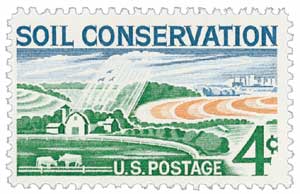
Another driving force in the soil conservation movement began in 1932: the Dust Bowl. Decades of homesteading and commercial agriculture had badly damaged the soil in the Great Plains. Extensive droughts led many crops to suffer, and high winds lifted tons of soil into the air. In May 1934, a three-day dust storm blew 350 million tons of soil from the west toward New York and Boston. Some cities lit street lamps during the day to see through the thick dust. The dust storms continued into 1935, sweeping across the plains, and into Washington in March. The March storms coincided with Congress’s hearings on a proposed soil conservation law.
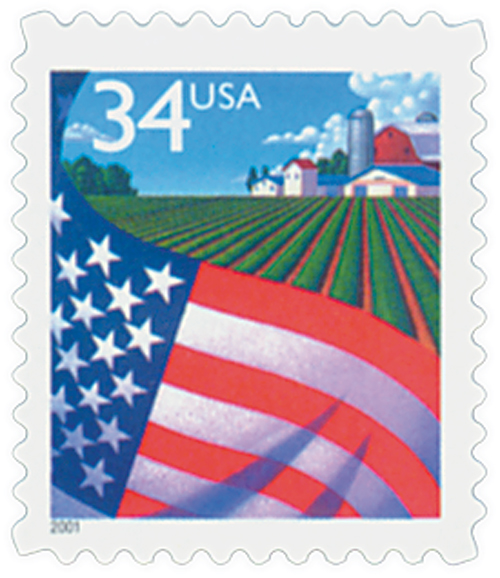
Bennett wrote editorials and testified before Congress explaining the role of soil erosion in these dust storms. Congress heard his pleas and passed the Soil Conservation Act, which President Roosevelt signed into law on April 27, 1935. The law established the Soil Conservation Service to “control floods, prevent impairment of reservoirs and maintain the navigability of rivers and harbors, protect public health, public lands and relieve unemployment.” Bennett served as its first chief. Farmers were given subsidies to plant native grasses and trees or raise vegetables. Within three years, soil erosion in the US dropped 65 percent.
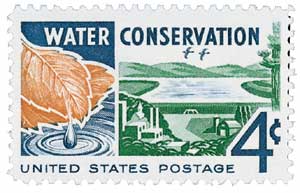
Following the passage of the Flood Control Act of 1936, the SCS also began surveying and providing flood control plans for watersheds. In 1938, it also began to oversee the USDA’s draining and irrigation assistance programs, snow surveys, water supply forecasts, and more. In 1937, the SCS established state soil conservation districts to help support these efforts on the local level. There are over 3,000 of these districts today.

The SCS grew significantly after World War II and merged with the Soil Survey. Following a large reorganization of the USDA, the SCS turned a large amount of the regional work over to state offices. By the 1950s, Congress had passed several bills providing for watershed planning under the SCS. They then passed the Watershed Protection and Flood Prevention Act, which gave the SCS permanent watershed planning authority. Over the years, they built 11,000 dams for over 2,000 watershed projects.
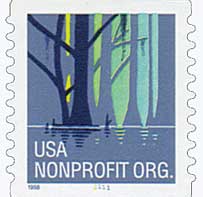
The SCS’s responsibilities continued to evolve and grow in the coming decades – they expanded their services to suburban areas, oversaw water quality projects, and took on the protection of wetlands. To reflect these changes, the SCS was renamed the Natural Resources Conservation Service in 1994. It continues to work with citizens, state and local governments, and other federal agencies to protect and repair our natural landscapes.

Flag Over Farm
City: Washington, DC
Printed by: Avery Dennison
Printing Method: Lithographed
Color: Multicolored
The Soil Conservation Service

On April 27, 1935, President Franklin Roosevelt signed the Soil Conservation Act. The act established the Soil Conservation Service (SCS) to reduce and repair the damage caused by soil erosion. The SCS’s work was expanded and continues today as the Natural Resources Conservation Service.
Hugh Hammond Bennett was one of the driving forces behind the act and the soil conservation movement – in fact he’s considered the “father of soil conservation.” Years earlier, Bennett was working as a surveyor for the US Department of Agriculture (USDA) Bureau of Soils. He saw first-hand how soil was eroded by wind and water, how this made it harder to grow crops, and in turn, how it damaged communities that depended on these crops. Bennett then set out to inform the nation, writing and speaking on the soil erosion crisis. In 1928, he published Soil Erosion: A National Menace, which encouraged Congress to establish their first federal soil erosion experiment stations in 1929.

After Franklin Roosevelt was elected president in 1932, his administration made conserving soil and water resources a high priority. The 1933 National Industrial Recovery Act established the Soil Erosion Service (SES) within the Department of the Interior. The SES visited areas with significant erosion issues and demonstrated how conservation efforts would help them.

Another driving force in the soil conservation movement began in 1932: the Dust Bowl. Decades of homesteading and commercial agriculture had badly damaged the soil in the Great Plains. Extensive droughts led many crops to suffer, and high winds lifted tons of soil into the air. In May 1934, a three-day dust storm blew 350 million tons of soil from the west toward New York and Boston. Some cities lit street lamps during the day to see through the thick dust. The dust storms continued into 1935, sweeping across the plains, and into Washington in March. The March storms coincided with Congress’s hearings on a proposed soil conservation law.

Bennett wrote editorials and testified before Congress explaining the role of soil erosion in these dust storms. Congress heard his pleas and passed the Soil Conservation Act, which President Roosevelt signed into law on April 27, 1935. The law established the Soil Conservation Service to “control floods, prevent impairment of reservoirs and maintain the navigability of rivers and harbors, protect public health, public lands and relieve unemployment.” Bennett served as its first chief. Farmers were given subsidies to plant native grasses and trees or raise vegetables. Within three years, soil erosion in the US dropped 65 percent.

Following the passage of the Flood Control Act of 1936, the SCS also began surveying and providing flood control plans for watersheds. In 1938, it also began to oversee the USDA’s draining and irrigation assistance programs, snow surveys, water supply forecasts, and more. In 1937, the SCS established state soil conservation districts to help support these efforts on the local level. There are over 3,000 of these districts today.

The SCS grew significantly after World War II and merged with the Soil Survey. Following a large reorganization of the USDA, the SCS turned a large amount of the regional work over to state offices. By the 1950s, Congress had passed several bills providing for watershed planning under the SCS. They then passed the Watershed Protection and Flood Prevention Act, which gave the SCS permanent watershed planning authority. Over the years, they built 11,000 dams for over 2,000 watershed projects.

The SCS’s responsibilities continued to evolve and grow in the coming decades – they expanded their services to suburban areas, oversaw water quality projects, and took on the protection of wetlands. To reflect these changes, the SCS was renamed the Natural Resources Conservation Service in 1994. It continues to work with citizens, state and local governments, and other federal agencies to protect and repair our natural landscapes.







